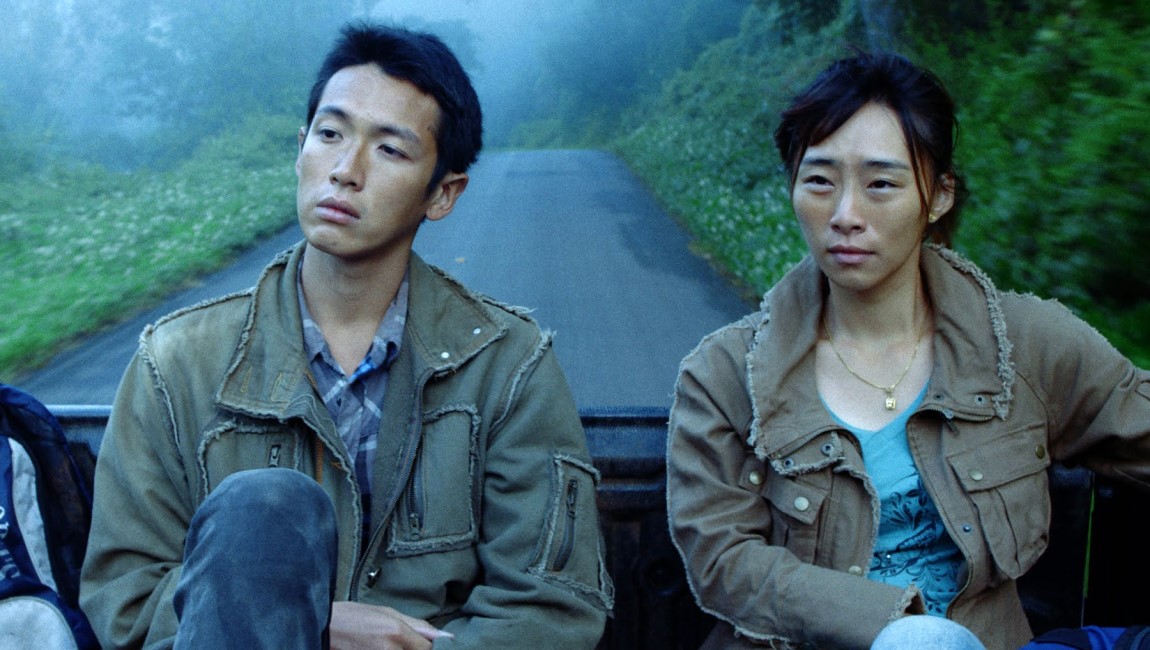Ana Lily Amirpour’s foray into prestige television isn’t entirely unexpected, given both her affinity with idiosyncratic, highly stylized horror cinema and a cultural demand for precisely this affinity, as best exemplified in Guillermo del Toro’s latest Netflix miniseries. Cabinet of Curiosities, consisting of eight episodes, seeks to “blur” the “line between what is outside and what is inside” — between the “images and voices in the dark” and those “in our head” — as del Toro so proffers in his preamble to Amirpour’s episode, “The Outside.” This already serves, in a way, as a tantalizingly metafictive commentary on the insidiously transformative and possibly manipulative potency of the image, its reflection of our deep desires and insecurities, as well as the very ability to manufacture them. “The Outside” begins with a simple premise, of a woman named Stacey (Kate Micucci) who works at a bank but doesn’t feel like she fits in with her female colleagues. While the worldly and buxom women gossip over such trendy-hot topics as male impotence and midlife boredom, and complain that their sex lives aren’t as illustrious as the sensationalist affairs of others, Stacey’s world is thoroughly desexualized. She snuggles in front of the TV on stormy nights, and with her husband Keith (Martin Starr), a police officer, but their intimacy is — as far as we can tell — almost platonic.
And so, an insecurity about the body sets in, which is in turn remedied by an image of physical newness and sensual proclivity. Stacey, invited for the first time to a Secret Santa party by one of her coworkers, tries out the trendy, skin-rejuvenating Alo Glo, but embarrassingly develops a rash in front of all in attendance. Despite or because of this embarrassment, she finds herself compelled to overcome the social barrier between herself and the wider world; the television, whether by its own accord or with the aid of hallucination, speaks to her directly and prompts her to embark on an Alo Glo regimen. Slathering her face and body with never-ending cream, Stacey internalizes a Nietzschean philosophy of resistance and will and subscribes, with deadly consequences, to the idea that “it gets worse before it gets better”; that the very itches she endures are, indeed, markers of healing and progress.
What ensues is generally what you’d expect out of an anthology bit: thematic fixation, coupled with oversized metaphors and acts of vengeance or redemption (or both). For Amirpour, whose best work dealt with issues of femininity and sexual commodification under boldly expunged settings (spaghetti Western vampirism in the Islamic Republic, capitalism’s desert of the Real, etc.), “The Outside” very much feels like a step down both tonally and narratively. Based on a short story by comic author Emily Carroll, the episode keeps a respectful distance from the radical notions of seeing (and being seen) it represents on screen rather conservatively, capitulating to a commonplace dialectic of appearance versus reality, outward attraction versus inner beauty. Micucci’s performance, splendid given her typecasting as awkward and insecure while not a wholly abject introvert, nonetheless evokes more pastiche than originality, with Sally Hawkins’ mute Elisa from del Toro’s The Shape of Water springing to mind here. All that being said, “The Outside” still holds up under its conditions of production, in large part due to the fuzzy, indeterminate temporality and spatiality it posits; are Alo Glo and television the consumer culture of its ostensible eighties, or reminiscent of the suburban conformity of Mad Men’s fifties, or instead belonging to a nostalgia twice removed — us reimagining the eighties as a longing for the earlier, airbrushed fifties? Are Stacey’s corporeal anxieties more intertwined with America’s materialist Christmas complex or do they befit the series’ own Halloween imaginary of the irreducibly unknown? One can certainly ask these questions, but “The Outside,” somewhat disappointingly, opts for text over subtext, coating its metaphors in conspicuous, viscous gel.







